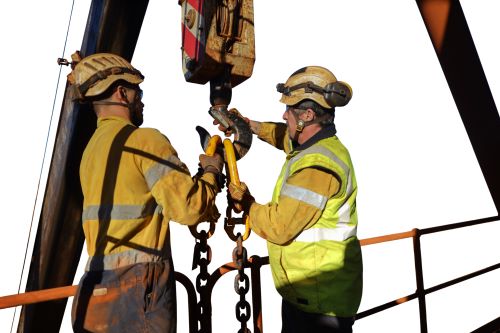
Daily Safety Checks for NCCCO Riggers

If there is one thing that we can impart to all of our students, it is that safety is priority number one in the heavy equipment industry. When you’re operating a piece of machinery capable of lifting literal tons of raw material, you can’t afford to be careless in your work. To be an NCCCO rigger, you need to hold yourself to the highest standards of safety. Luckily, it isn’t hard. All you need to do is build the right habits, and you can be a conscientious and effective employee wherever you go. As part of our mission to give future NCCCO riggers the best education possible, we stress the importance of safety in our classes. By incorporating these daily safety checks, you’ll form a strong foundation that will help you throughout your career.
Ensure You Have Your Protective Equipment
As with any heavy machinery job, NCCCO riggers should be very diligent with their personal protective equipment. Hard hats, eye protection, sturdy work gloves, and proper work boots can go a long way in keeping you safe from injury. Depending on the project, a respirator may also be recommended to prevent inhaling harmful particles. While you should be mindful of your surroundings, it’s also important you prepare for any dangers that may catch you off guard.
Inspect the Area of Operation
Before you climb into your crane, take a good look around the area you will be operating in. By surveying the area ahead of time, you can catch anything that might become a hazard while you operate the crane. When you’ve worked as an NCCCO rigger for a while, you’ll be able to spot such potential dangers easily.
Anything in the area above your worksite, such as powerlines, should be noted before you begin work. You should also note anyone else in the area who may be put in a dangerous situation, whether because they’re not wearing proper protective equipment or because they shouldn’t be there at all. Safety is all about preparation, so the more thorough you can be while looking for any potential dangers the better.
Inspect the Crane Itself
Once you’re satisfied that you’re well protected and the area is secure, you’ll need to check the crane for anything that may lead to a dangerous situation. It’s something we stress with all of our students. As an NCCCO rigger, you’ll need to be highly familiar with any warning signs that might be visible. Before you climb in, see if you can spot any problems along its structure. How do the ropes look? What about the hook or outriggers? If you notice any damage or wear, take the time to repair it before proceeding with your job.
When you’ve determined the exterior is up to muster, move on to the interior. Check the conditions of the controls and brakes, and look closely for any warning indicators that may be displayed. If you find anything out of the ordinary, don’t hesitate to take a step back and reevaluate the situation before you get to work. It may take some extra time, but the safety of you and your coworkers is the highest priority.
